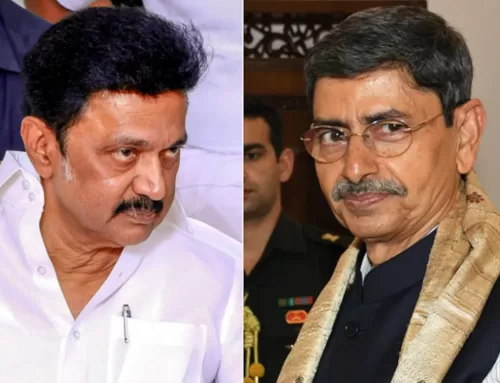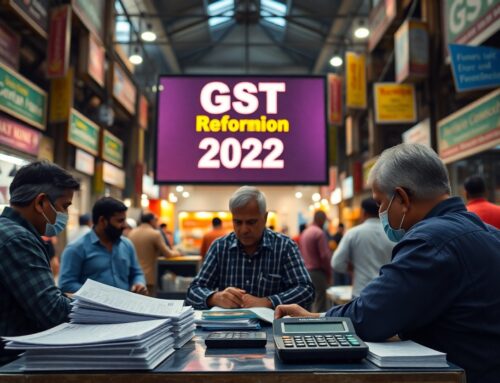– Abul Kalam Azad Sulthan, Advocate, High Court of Judicature at Madras and Madurai Bench of Madras High Court & Partner, Spicy Law Firm.
Introduction:
LLP is a new corporate vehicle in India and it is a right combination of features of a Partnership firm and a limited liability company (A private limited company). It is as flexible as a Partnership firm and has the advantages of a limited liability company. Limited Liability Partnership Act, 2008 introduced this new corporate structure in India. Small and medium size businesses, service sector businesses, and professionals (like Chartered Accountant firms, Law firms etc) prefer to incorporate as LLP[1]. It is a trendy internationally as the service industry and professionals prefer to structure their entity as LLP. This article is about FDI in Indian LLPs. Foreign Direct Investment (FDI) is the major source of funds for development of the economy in India. Due to the cheap wages and vibrant changes in the Indian economy, foreign investors invest directly in rapidly developing businesses in India. Since 1991, India started liberalisation and that has helped to create more than 10 million jobs and rapid growth in the country’s economy. The then Prime Minister of India P.V. Narasimha Rao and the Finance Minister (Later he became the Prime Minister of India for two times in 2004 and 2009) Dr. Manmohan Singh brought the concept of Foreign Direct Investment in India[2]. Since the Limited Liability Partnership is a new corporate vehicle, there were several new changes, legal amendments in the FDI in Limited Liability Partnerships. In this article, we will discuss the FDI in Indian LLPs.
FDI in India
Two routes are available in India to receive Foreign Direct Investment. One is Automatic Route and the other is Government Route. In the Automatic Route, there is no need of prior approval from Government of India or Reserve Bank of India to receive Foreign Direct Investment. But in the case of Government Route, prior approval from the Government of India and Reserve Bank of India is necessary to receive Foreign Direct Investment. The Government Route is also called as Approval Route. To receive Foreign Direct Investment via this Government Route, the application has to be submitted through the Foreign Investment Facilitation Portal[3] which is managed by the Department of Industrial Policy & Promotion (DIPP), Ministry of Commerce & Industry, Government of India. This portal facilitates the parties with single window clearance. The Portal will forward the application to the relevant ministries and those ministries will follow the standard protocol and act on the application. Earlier there was a Foreign Investment Promotion Board (FIPB) bestowed with the powers regarding the Foreign Direct Investment through Government Route. Foreign Investment Promotion Board (FIPB) was abolished on 24th May 2017[4].
LLP in India:
LLP is a new corporate vehicle and is preferred by Small and Medium sized entities, service industry and professionals (Chartered Accountant Firms, Law Firms etc), because of the flexible nature of the Corporate Structure. It is also one of the easiest business structure to incorporate and manage in the long run. Compliance is very simple and easier than any other form of business in India.[5] Since it is a new form of business in India, there was some ambiguity initially. Investors, especially angel investors etc preferred to invest in a Limited Liability Company (Private Limited Company) than investing in an LLP. It is because, in the case of Limited Liability Company, transfer of shares is very easy. Later Reserve Bank of India liberalised Foreign Direct Investment[6] in Limited Liability Partnerships. Let us look into this in detail on the following topics.
RBI and FDI in Indian LLPs:
Apart from Indian Nationals and Businesses incorporated in India, Limited Liability Partnership Act, 2008 also permits foreign nationals, foreign companies (companies incorporated outside India) and Limited Liability Partnerships incorporated in foreign countries to be designated as partners[7] in Limited Liability Partnerships in India.
In April 2011, the Government of India issued a notification in which permission was granted to allow Foreign Direct Investment (FDI) in Limited Liability Partnerships (LLPs) with certain conditions. Even then, it did not materialise as Reserve Bank of India did not proceed to allow Foreign Direct Investment in LLPs. Later, in 2014 Reserve Bank of India allowed FDI in LLPs through the Government Route, that is with prior approval from Government of India and Reserve Bank of India.[8]
On April 16, 2014, the Reserve Bank of India through AP (DIR Series) Circular No. 123 of 2014 allowed Foreign Direct Investment in Limited Liability Partnerships[9] only in some specifically permitted sectors with a cap (limit) for each such sector. The permission was granted only through Government Route, that is with prior approval. Although Foreign Nationals were allowed to be the partners in a Limited Liability Partnership in India, capital subscription by such foreign nationals could not be done.
In 2015, Press Note 12 of 2015 was published and there were some major amendments in the Consolidated FDI Policy of 2015. After this amendment, Foreign Direct Investment in Limited Liability Partnerships is allowed under Automatic Route (under this route, there is no need of prior approval from Government of India or Reserve Bank of India) in sectors in which 100% Foreign Direct Investment is allowed generally. There are no other conditions or requirements based on FDI-linked performance.
Limited Liability Partnerships having received the Foreign Direct Investment is also allowed to perform downstream investment in any other Limited Liability Company (Private Limited Company) or Limited Liability Partnership (LLP) in those sectors in which 100% Foreign Direct Investment is permitted through the Automatic Route and there are absolutely no conditions or requirements based on FDI-linked performance. Moreover, the Limited Liability Partnership must have control, managing authority and ownership in the downstream Limited Liability Partnership as given below:
- Ownership: To be considered as owned by resident citizens of India, at least 50% of the total investment for the LLP has to be by such resident citizens of India or entities in India and the resident entities from India should have the maximum share of profits.[10]
- Management and Control: With regards to the downstream LLP, the LLP which is investing must have the rights to appoint all or majority of the designated partners in the downstream LLP and the policy decision of the downstream LLP should be done by the designated partners of the investing LLP. That means the designated partners of the downstream LLP, who are appointed by the investing LLP should have control over all policy making decisions of the downstream LLP.
The Investor (angel investor or foreign entity), who have done Foreign Direct Investment in India can repatriate their investment (capital contribution) automatically, but such repatriation should follow and comply with the requirements related to reporting and appropriate guidelines regarding pricing.
Till March 2017, issues were persisting regarding FDI in Indian LLPs, although the Government liberalised the conditions with the revised FDI policy of Government of India. There were several restrictions in receiving External Commercial Borrowings (ECB). Moreover, if a Limited Liability Company (Private Limited Company) is converted to a Limited Liability Partnership, then such LLP has to follow the Government Route (Approval Route).
Later, the Reserve Bank of India amended Schedule 9 of the FEMA 20/2000-RB dated 3rd May 2000 by issuing the notification FEMA 385/2017-RB dated 3rd March 2017. With this amendment, the notification incorporated the liberalizations in the Reserve Bank of India regulations related to Foreign Direct Investment in a Limited Liability Partnerships.
The important and salient features[11] of the Foreign Exchange Management Act 385/2017-RB dated 3rd March 2017 are as follows:
- If a company is doing business in any of the sectors in which 100% Foreign Direct Investment is allowed under Automatic Route (that is, without prior approval of Government of India or Reserve Bank of India), then such Companies can also be converted to a Limited Liability Partnership even after receiving Foreign Direct Investment and this can be done through the automatic route and there are no conditions regarding FDI-linked performance. Earlier to this FEMA 385/2017- RB, if a Limited Liability Company (Private Limited Company) is converted to a Limited Liability Partnership, then such LLP has to follow the Government Route (Approval Route).
- Earlier to FEMA 385/2017-RB, there was a condition/requirement[12] that only a Corporate Body (entity) who is also a partner in the Limited Liability Partnership can appoint a designated partner only if it is incorporated under the Indian Companies Act. Now, this condition/requirement has been removed with the notification of FEMA 385/2017-RB and hence even a Foreign Company or any Body Corporate incorporated in a foreign country can also appoint a Designated Partner in the Limited Liability Partnership.
- If a Limited Liability Partnership has received Foreign Direct Investment and If an individual is appointed as Designated Partner in that Limited Liability Partnership, there is a condition or requirement that the individual must satisfy the condition of residency test under Foreign Exchange Management Act and also must satisfy the conditions of residency test as given in the Explanation to Section 7 of Limited Liability Partnership Act, 2008. These two requirements have been withdrawn by notification under FEMA 385/2017-RB.
- With regards to External Commercial Borrowing, earlier Limited Liability Partnerships were explicitly prohibited from receiving External Commercial Borrowings. [13]The recent amendment (that is Foreign Exchange Management Act 385/2017-RB) did not specifically mention about the prohibition of External Commercial Borrowings by the Limited Liability Partnerships. At the same time, the amendment did not explicitly give any permission to receive External Commercial Borrowings by the Limited Liability Partnerships. Hence we can understand that, although the permission was not granted, the explicit prohibition of External Commercial Borrowings by the Limited Liability Partnerships has been removed. The permission may be granted after the amendment to the External Commercial Borrowing Policy Framework.[14]
- Now there is a requirement that the Limited Liability Partnerships, if they have received Foreign Direct Investment, have to submit a report along with their annual return regarding the foreign assets and liabilities on or before 15th July of every year, to the Reserve Bank of India in the prescribed format. The report has to be filled as prescribed by the Reserve Bank of India from time to time.
- The terms ‘control’, ‘internal accruals’ and ‘ownership’ with regards to Limited Liability Partnerships have been defined by the latest amendment and thus to assist in smooth Foreign Direct Investment in Limited Liability Partnerships.
|
Till 2017, to say specifically, till the amendment by notification under FEMA 385/2017 -RB, there was a huge confusion, ambiguity, and discrepancy between the Foreign Direct Investment Policy of Government of India and Regulations issued by Reserve Bank of India regarding Foreign Direct Investment in Limited Liability Partnerships. This amendment is long awaited and removed the discrepancy and ambiguity prevailed between the Foreign Direct Investment Policy of Government of India and Regulations issued by Reserve Bank of India regarding Foreign Direct Investment in Limited Liability Partnerships.[15]
|
Works Cited – Bibliography
Sumesh Dewan, Kaviraj Singh: Doing Business in India: India commercial Laws
Tejpal Sheth: Business Law
Chandan Kumar Gupta: LLP: Limited Liability Partnership
Sairam Bhat: Law of Business Contracts in India
M.C. Kuchhal & Vivek Kuchhal: Business Legislation for Management, 4th Edition
Rupa Chanda, Pralok Gupta: Globalization of Legal Services and Regulatory Reforms
Arpita Mukherjee, Nitisha Patel: FDI in Retail Sector, India
Niti Bhasin: Foreign Direct Investment (FDI) in India: Policies, Conditions and Procedures
Bisweswar Bhattacharya, Satinder Palaha: Policy impediments to trade and FDI in India
K.S.V. Menon & Garima Malik: Funding Options for Startups: A Conceptual Framework and Practical Guide
Tapan Kumar Shandilya: Foreign Direct Investment in India: Problems and Prospects
[1] Sumesh Dewan, Kaviraj Singh: Doing Business in India: India commercial Laws
[2] Tejpal Sheth: Business Law
[3] Arpita Mukherjee, Nitisha Patel: FDI in Retail Sector, India
[4] Tejpal Sheth: Business Law
[5] Chandan Kumar Gupta: LLP: Limited Liability Partnership
[6] Niti Bhasin: Foreign Direct Investment (FDI) in India: Policies, Conditions and Procedures
[7] Sumesh Dewan, Kaviraj Singh: Doing Business in India: India commercial Laws
[8] Niti Bhasin: Foreign Direct Investment (FDI) in India: Policies, Conditions and Procedures
[9] Chandan Kumar Gupta: LLP: Limited Liability Partnership
[10] Tejpal Sheth: Business Law
[11] K.S.V. Menon & Garima Malik: Funding Options for Startups: A Conceptual Framework and Practical Guide
[12] Sairam Bhat: Law of Business Contracts in India
[13] Arpita Mukherjee, Nitisha Patel: FDI in Retail Sector, India
[14] K.S.V. Menon & Garima Malik: Funding Options for Startups: A Conceptual Framework and Practical Guide
[15] Rupa Chanda, Pralok Gupta: Globalization of Legal Services and Regulatory Reforms
[16] Sairam Bhat: Law of Business Contracts in India
[17] Tapan Kumar Shandilya: Foreign Direct Investment in India: Problems and Prospects
[18] Rupa Chanda, Pralok Gupta: Globalization of Legal Services and Regulatory Reforms
[19] M.C. Kuchhal & Vivek Kuchhal: Business Legislation for Management, 4th Edition
[20] Tapan Kumar Shandilya: Foreign Direct Investment in India: Problems and Prospects
[21] M.C. Kuchhal & Vivek Kuchhal: Business Legislation for Management, 4th Edition
[22] Bisweswar Bhattacharya, Satinder Palaha: Policy impediments to trade and FDI in India
[23] Bisweswar Bhattacharya, Satinder Palaha: Policy impediments to trade and FDI in India







Leave A Comment